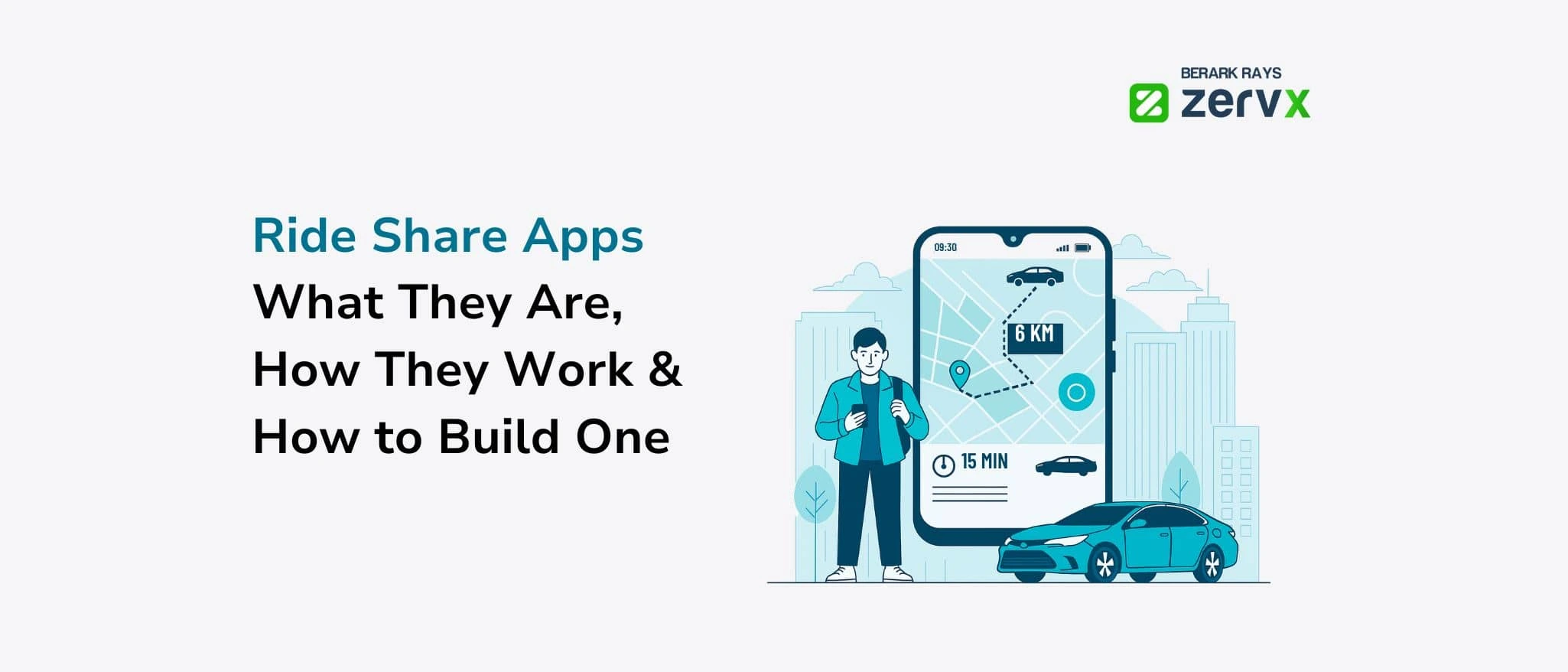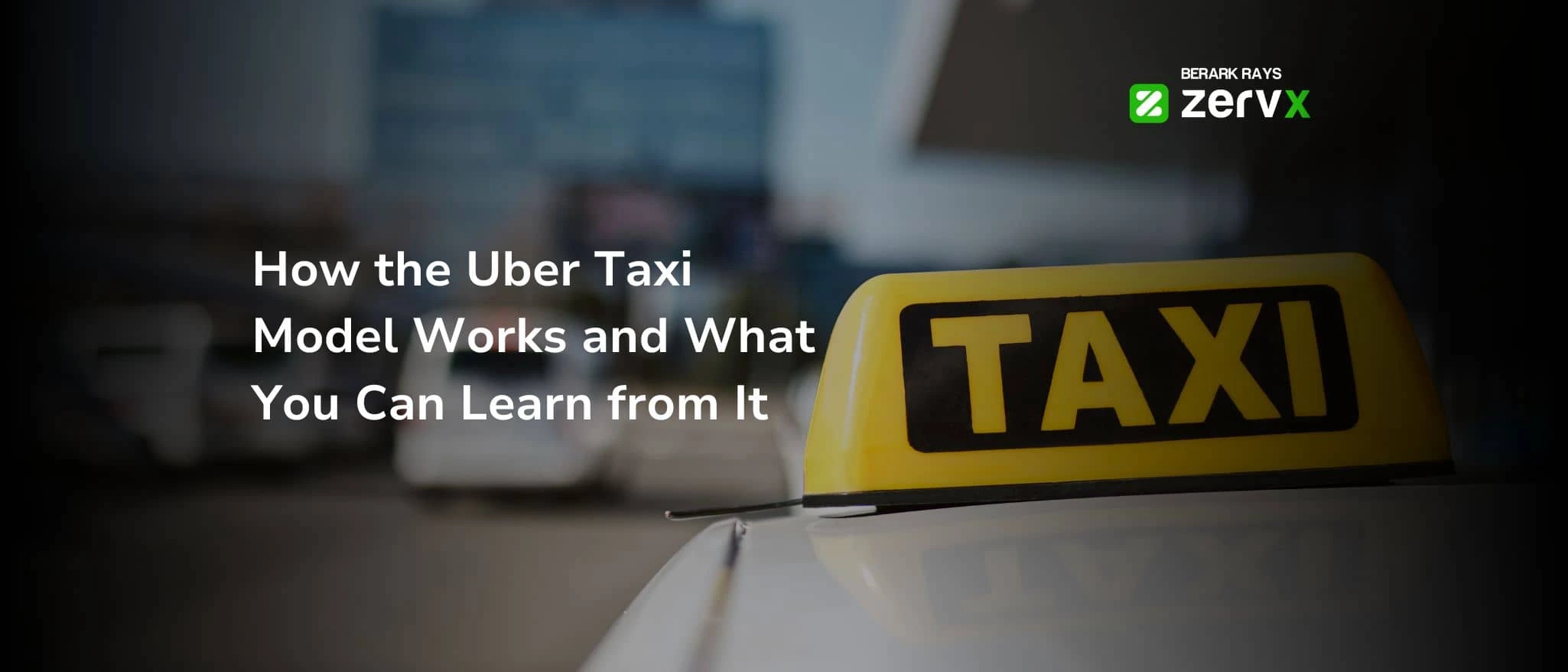How to Launch a Successful Taxi Business with an Uber Clone
Are you looking to enter the taxi industry with your own startup? A great way to kick off your venture is by launching an Uber taxi clone.
John Sibin Raj
Jan 31, 202411 min read
Step 1: Understand the South African taxi industry landscape
Step 2: Register your business the right way
Step 3: Get the right licenses & permits
Step 4: Choose your vehicle(s) smartly
Step 5: Get the right insurance
Step 6: Create a business plan that works in South Africa
Step 7: Decide – will you go app-based or traditional?
Step 8: Hire and train drivers
Step 9: Set your pricing (and profit margins)
Step 10: Market your taxi business (online + offline)
Tools that make your taxi business easier to run
How much does it cost to start a taxi business in South Africa?
Final thoughts
Look around any South African city, and one thing stands out people are always on the move. From early morning commuters in Johannesburg to tourists in Cape Town or school kids in smaller towns, transport is part of daily life. But even with all this movement, getting a reliable ride isn’t always easy, the demand for local transport keeps growing.
Many traditional taxis still rely on cash, have no tracking, and leave both drivers and passengers frustrated. At the same time, big ride-hailing apps like Uber and Bolt don’t always work for smaller towns, and their high commission fees eat into local drivers’ profits.
That’s where the opportunity lies.
If you’re someone who owns a car (or plans to buy one) and wants to turn it into a steady income, now is the perfect time to start your own taxi business in South Africa. Even if you’re completely new to the industry, it’s possible to launch smart legally, profitably, and with the help of new tools that weren’t available a few years ago.
This guide is written for first-time entrepreneurs, small business owners, and anyone who wants to enter the local transport market the right way. No fancy words, no guesswork. Just real steps to help you:
By the end of this guide, you’ll have a clear roadmap to launch your own local taxi business even if it’s just you and your car. And the best part? You’ll own it 100%.
Let’s get started.
Before you jump in, it’s important to understand what kind of taxi business you want to run and what’s already working in South Africa in 2025. Not all taxi services are the same, and each one comes with different rules, costs, and opportunities.
Let’s break it down clearly.
| Taxi type | What it is | Common in | Good for |
|---|---|---|---|
| Minibus taxis | 15-seater vans used for shared routes and daily commuting | Cities, townships | High passenger volume, daily cash income |
| Metered taxis | Regular sedan or hatchback taxis that charge by distance (with a meter) | Airports, hotels, CBDs | Tourists, fixed routes, business travelers |
| Ride hailing | Digital app-based taxi service (like Uber, Bolt, or your own app) | Urban areas, suburbs | Younger users, app lovers, cashless payments |
Each model can work but what works best depends on where you are, how many cars you own, and who your target riders are.
The minibus industry is still the biggest in terms of daily riders, but it’s competitive and often requires operating in specific routes. That means you’ll need a route license and to follow local rules closely.
Metered taxis are slowly losing ground to app-based services because customers now prefer tracking, booking ahead, and cashless payments. This opens a big door for new players who are smart, legal, and digital.
The fastest-growing model in 2025? Ride-hailing style taxis but owned and branded by local businesses, not big global apps.
If you’re just starting out, watch out for these problems:
1. No business registration: You can’t legally operate without it.
2. Missing licenses: You must have a Public Driving Permit (PrDP) and an operating license.
3. Using personal cars with no passenger insurance: This can cause legal issues if there’s an accident.
4. No tracking or booking system: Customers today want to book easily, pay digitally, and trust their ride is coming.
5. Trying to run without a proper plan or pricing: You’ll end up undercharging or losing money.
Starting a taxi business in South Africa isn’t just about having a car and picking up passengers. To run legally and grow over time, you need to register your business the right way and avoid unnecessary delays.
This step is easier than most people think, and you don’t need a lawyer. You just need to follow the process carefully.
CIPC is the official government body where you register businesses in South Africa.
You can do it online visiting their official website.
Here’s how it works:
Step 1: Create a customer profile on the CIPC website
Step 2: Reserve your business name (optional, but good if branding matters)
Step 3: Choose your business structure
Step 4: Pay the registration fee
Step 5: Get your registration documents by email
This whole process can take 7 to 14 business days, depending on CIPC load.
You’ll likely choose between:
| Business type | Best for | Notes |
|---|---|---|
| Sole proprietor | One-person taxi business | Easy to set up, lower admin, taxed personally |
| Private company (Pty Ltd) | Growing fleets or hiring drivers | Better for scaling, can raise capital, separate finances |
Once your company is registered, you’ll need to:
Keep personal and business money separate this helps with tax filing and avoids legal issues.
Once this step is done, you’re officially a business owner and ready to apply for your taxi permits, insurance, and more.
To legally run a taxi business in South Africa, you need a few important documents. Without them, you risk fines, impoundments, or even jail time. But don’t worry the process is manageable if you plan ahead.
What you’ll need:
This is required if you're transporting paying passengers. You can apply through your local traffic department. You’ll need a valid driver’s license, medical test, and police clearance.
This allows your vehicle to legally carry passengers for public transport. Applications are handled by the Local or Provincial Regulatory Entity depending on your city or province.
Some cities have extra local rules (especially for metered taxis or minibus routes). Always check with your local municipality.
Requirements vary by location, so it’s smart to visit or call your local transport office early. Ask exactly what forms and fees are needed this avoids back-and-forth delays later.
Your taxi is your business. The right vehicle can help you earn more, spend less on fuel and repairs, and keep passengers safe and happy. But don’t overthink it you don’t need a luxury car to get started.
Whether you’re starting with just one car or building a small fleet, here’s what you should consider.
If you’re just testing the market, it’s okay to start with one reliable car. Many successful taxi businesses in South Africa began this way. Once you see regular income, you can scale up by adding more vehicles and drivers.
If you already own a car in good condition, you may be able to use it. Just check that it meets transport regulations and has the right insurance.
Insurance protects your business, your car, your passengers and your future income. Accidents, theft, and damage can happen anytime, so having proper cover is not just smart it’s required by law in many cases.
You don’t need a fancy document or business degree to create a good taxi business plan. You just need a simple plan that helps you stay focused, avoid overspending, and reach your goals.
Think of it like a roadmap. It tells you where you’re going, how much it’ll cost, and what steps to take.
Here’s what to include in your basic plan:
What kind of taxi service are you offering? App-based? School runs? Airport rides?
Who are your customers? Workers? Students? Tourists? What area will you serve?
How much will your car, registration, and permits cost? Add insurance, fuel, and maintenance.
Will you charge per kilometer, flat rate, or time-based? What do others in your area charge?
Estimate how many rides you need to make per day to break even and make a profit.
How will people find you? Google? Facebook? Flyers? Word of mouth?
Start with 1 car but what’s next? Will you add drivers? More cars? A branded app?
Keep it simple, but write it down. A short, clear business plan helps you stay on track and know when it's time to grow.
In 2025, this is one of the most important decisions you'll make when starting your taxi business in South Africa. You can run your business the traditional way picking up passengers on the street, charging cash or go digital with an app-based system that brings more structure and reach. Let’s look at the difference.
This model still works in some areas, but it’s slowly losing ground. Customers now expect more especially younger riders and professionals.
Even with few cars, an app gives you a big advantage. It makes your business look serious and helps customers trust you.
Live tracking: Riders see where you are no waiting guesswork
Cashless payments: Secure, faster, no need for change
Better visibility: Get bookings from Google, WhatsApp, social media
Branded experience: You control the app, pricing, and service no commission to big platforms
When starting a taxi business, you have two choices drive the vehicle yourself or hire someone to do it for you. If you’re just beginning and want to keep costs low, starting solo is a smart. move. You stay in control, learn the business firsthand, and keep all the earnings.
If you’re planning to hire drivers, make sure they have a valid driver's license, a clean record, and a Public Driving Permit (PrDP). It’s also a good idea to check references and past experience. A driver who knows the local area, speaks clearly, and treats passengers well can really boost your business.
Training is important, especially if you're using a dispatch app. Drivers should know how to use the app properly, follow routes, and handle customers politely. Even a small amount of training on customer service and safety can make a big difference.
If you grow your fleet later, create a basic set of driver rules and offer incentives for those who perform well. Happy drivers mean better service and more returning customers.
Pricing is one of the most important parts of running a taxi business. If your price is too high, people won’t book. If it’s too low, you won’t make a profit. So, you need to find the right balance that works for your area, your expenses, and your customers.
Start by checking what other taxis in your area charge both traditional and app-based. Then, look at your own costs: fuel, maintenance, insurance, and any driver salary (if you’re not driving yourself).
You can choose between:
You can also offer discounts or loyalty deals to get repeat customers for example, ride free” or special rates for school runs.
The key is to keep your pricing simple, fair, and easy for customers to understand. Add your prices clearly on your app, flyers, or business cards to build trust.
Having a taxi is great but if people don’t know about it, you won’t get many bookings. That’s why marketing is important, even if you’re starting with few cars. You don’t need a big budget. You just need to be smart and consistent.
Happy riders are your best marketers. A simple “thank you” and on-time pickup goes a long way. People will remember good service and tell others especially in small towns or tight communities.
| Tool | What it does | Why you need it |
|---|---|---|
| Admin Panel | Central platform to manage bookings, assign trips, track cars live | Avoids double bookings, improves efficiency, works even with a small team |
| Passenger app | Riders can book, track rides, pay digitally, and rate trips | Makes your business look professional, builds trust, reduces no-shows |
| Driver app | Lets drivers receive trips, navigate routes, check earnings, and update status | Helps drivers stay on track, improves response time, and records trip data |
| Web booking & website | Online portal for customers to pre-book or check fare estimates | Adds visibility online, brings in more bookings, works well for hotels |
Starting a taxi business in South Africa doesn’t have to cost a fortune. If you're beginning with few used vehicle and handling most things yourself, the overall setup can be quite affordable. On average, many new operators spend anywhere from R90,000 to R180,000 to get started. This covers the cost of a reliable secondhand car, business registration, permits, insurance, and a basic marketing budget.
If you’re choosing to go digital with your own booking app and dispatch system, platforms like ZervX offer entry-level plans that are affordable, especially compared to the high commissions taken by big ride-hailing platforms. Additional costs like fuel, regular maintenance, and driver salaries (if you hire) will come in monthly, so it’s important to plan for those early on.
The good news is, most of these costs are one-time or can be scaled slowly. You don’t need everything at once. With the right plan, you can start small and grow as your income builds.
Final Thoughts
Starting a taxi business in South Africa may feel overwhelming at first, but once you take the first step, it gets easier. You don’t need a big fleet, fancy office, or years of experience. What matters is doing it right legally, safely, and with your local market in mind.
Start small, learn fast, and build trust in your area. Focus on showing up on time, keeping your vehicle clean, and giving passengers a good ride every time. These small things help you stand out from the crowd, especially if you're using a booking app and offering cashless payments.
As more people rely on transport every day to school, work, clinics, or shopping there’s room for new taxi owners who run their service like a real business. Whether you’re from a big city or a small town, this is your chance to take control of your future and grow something you own fully.
Step 1: Understand the South African taxi industry landscape
Step 2: Register your business the right way
Step 3: Get the right licenses & permits
Step 4: Choose your vehicle(s) smartly
Step 5: Get the right insurance
Step 6: Create a business plan that works in South Africa
Step 7: Decide – will you go app-based or traditional?
Step 8: Hire and train drivers
Step 9: Set your pricing (and profit margins)
Step 10: Market your taxi business (online + offline)
Tools that make your taxi business easier to run
How much does it cost to start a taxi business in South Africa?
Final thoughts
Blog

Are you looking to enter the taxi industry with your own startup? A great way to kick off your venture is by launching an Uber taxi clone.
John Sibin Raj
Jan 31, 2024
Ride share apps are part of everyday life now. You might use one to get to work, send someone to the airport, or manage transport for your team. They're fast, easy, and everywhere.
Ebenezer Jose
Apr 11, 2025
The word "Uber" is now used like a verb in many places. People say, “I’ll just Uber there.” That’s how big of a change Uber brought to the taxi world.
Ebenezer Jose
June 24, 2025